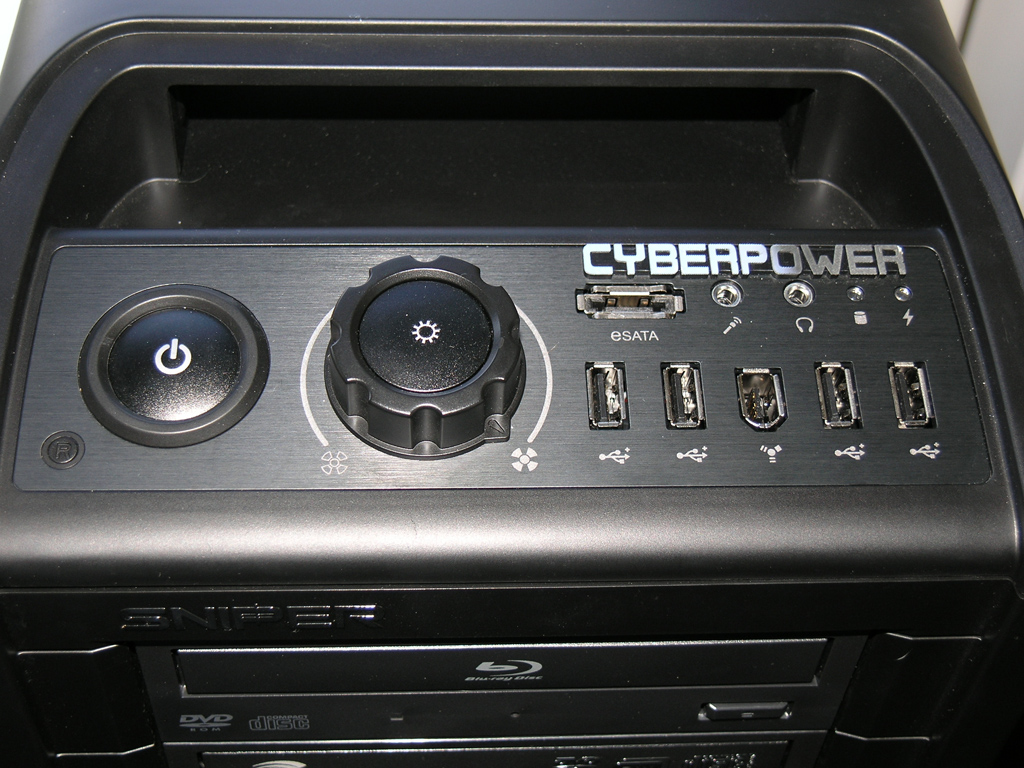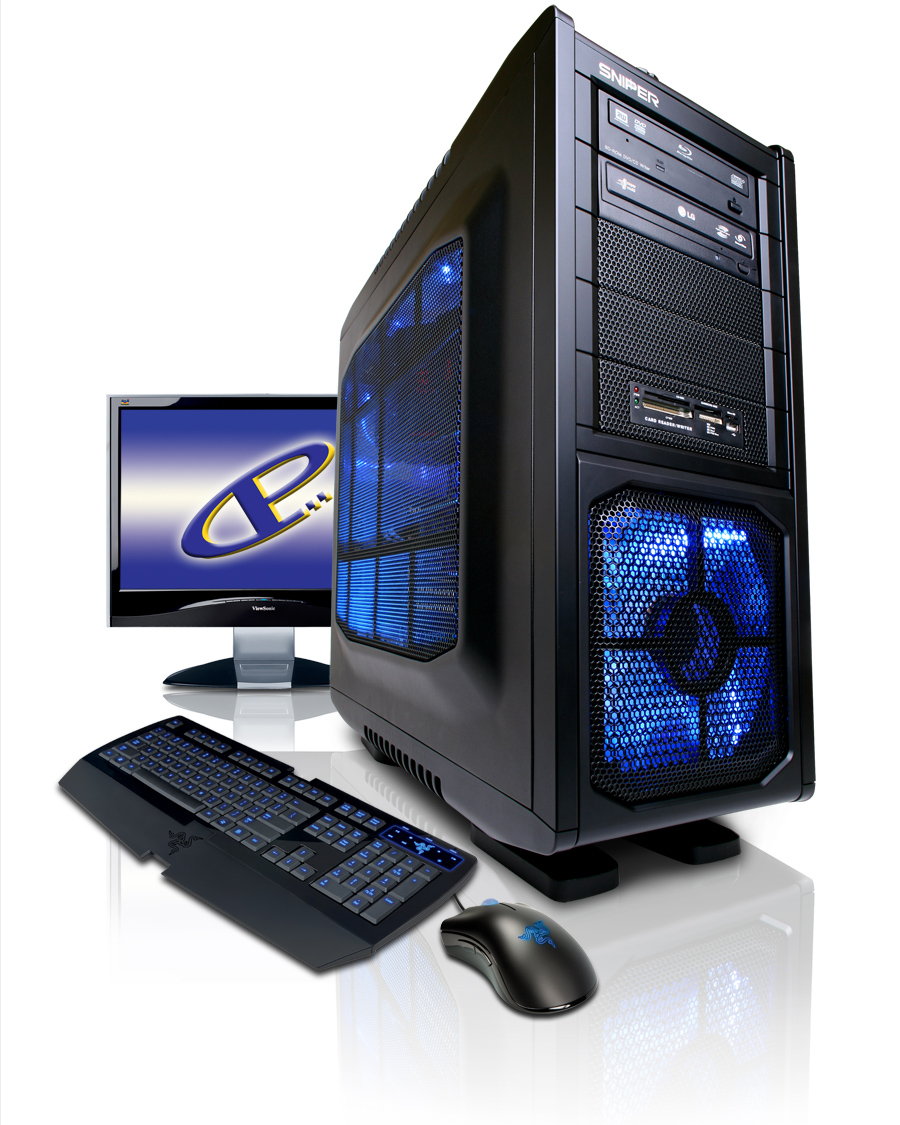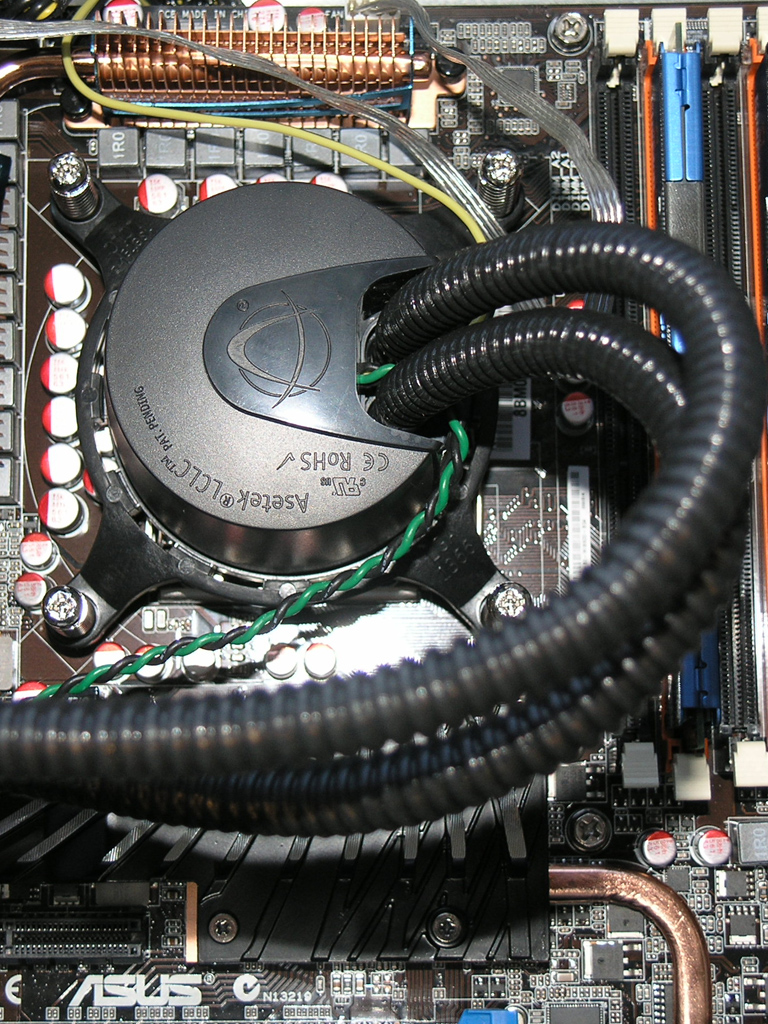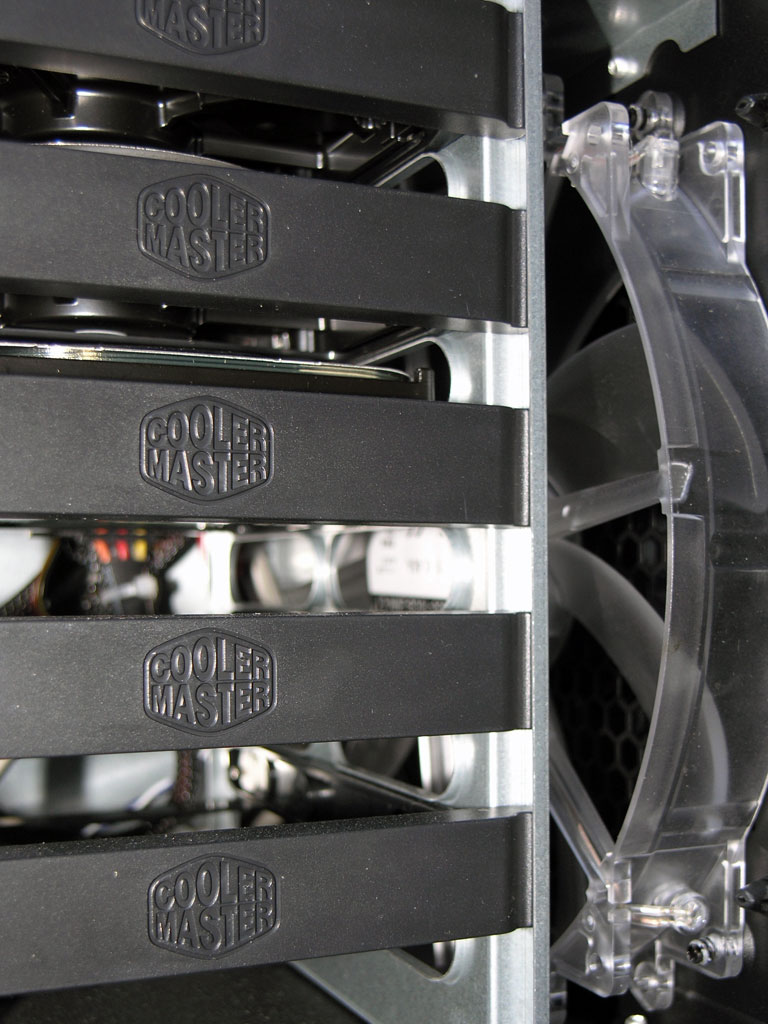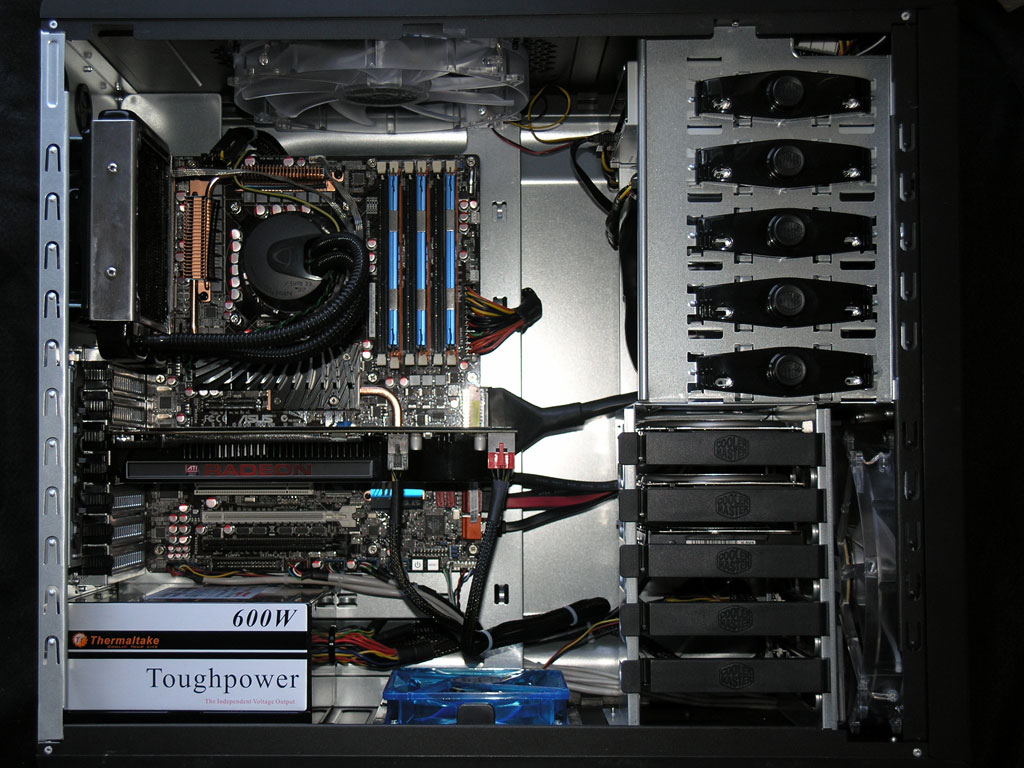Three Core i7 Systems From Boutique Builders
CyberPower Xtreme
Gamers who travel to LAN parties (and anyone else who moves their PC frequently) will love the Cooler Master Storm Sniper chassis that CyberPower chose to build their Core i7 rig in. This large mid-tower has two massive handles cleverly integrated into its design, and while it’s fabricated from steel, it’s surprisingly light.
As we noted in our AVADirect review, though, gaming rigs tend to be noisy and the CyberPower was easily the loudest of the three machines in this roundup, even when we dialed the top exhaust fan to its slowest rotational speed using the oversized knob on the top of the case. This machine would be even louder if it didn’t cool its CPU with Asetek’s LCLC (the acronym stands for Low Cost Liquid Cooling). This is closed-loop system similar to the Domino A.L.C. we saw in the AVADirect system, but it doesn’t include a fancy display like the one on the CoolIT product.
Processor and Motherboard
Asus’ P6T Deluxe motherboard, featuring Intel’s X58 core-logic chipset, makes its second appearance in this roundup, but it plays host to Intel’s faster Core i7 940 this time. CyberPower juiced the chip’s clock speed from its stock 2.93 GHz to 3.61 GHz. As with the AVADirect system, we didn’t encounter any instability as a result of the overclocking.
CyberPower populated three of the motherboard’s six DIMM slots with Kingston HyperX DDR3 memory running at 1,600 MT/s in order to take advantage of the Core i7’s triple-channel architecture. As we mentioned in the AVADirect review, the P6T Deluxe is outfitted with Marvell’s Yukon 88E8056 to offer two 1 Gb/s NICs, and eight-channel audio provided by an Analog Devices SoundMax AD2000B audio chip.
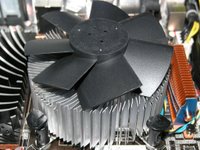
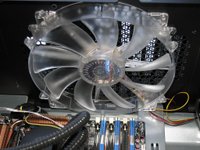
Graphics
The P6T Deluxe supports both SLI and CrossFireX, but CyberPower used a single videocard with two AMD GPUs: the Sapphire Radeon HD 4870 X2. Since we’re looking for a balanced rig adept at handling all types of applications, we’re happy to see a little more of the budget go towards a faster CPU even if does come at the expense of gaming performance.
Get Tom's Hardware's best news and in-depth reviews, straight to your inbox.
The Radeon HD 4870 X2 enjoyed a brief run as the market’s fastest single-card solution, but its performance has since been surpassed by Nvidia’s GeForce GTX 295. Still, the Sapphire board is no slouch in the benchmark department. The board’s two GPUs boast 800 stream processors each, running at a core clock speed of 750 MHz. Each GPU has a 256-bit interface to 1 GB of GDDR5 memory running at 900 MHz.
For what it’s worth, AMD’s dual-GPU implementation is more elegant than Nvidia’s. All the 4870 X2’s components are mounted on a single PCB, compared to the two-board sandwich that is Nvidia’s GTX 295. And the Radeon card doesn’t need a cable to pipe digital audio to the video connector on its mounting bracket; audio is routed through the PCI Express bus. The GPUs and memory are cooled by conventional heatsinks and fans.
Storage and Optical
CyberPower installed the 64-bit version of Windows Vista Home Premium on a RAID 0 array formed by two 500 GB Hitachi Deskstar drives. They also installed a 1 TB Western Digital WD10EACS drive for additional storage. Capacious storage is an important consideration for a system that’s going to be used for applications such as video editing. AVADirect supplies a larger second drive, but they didn’t include a RAID; the Alienware came with a fast RAID, but no secondary means of storage at all. CyberPower’s solution is just right for the application we specified.
CyberPower also got the optical drives right: There’s a LightScribe-capable Sony DVD burner for backups and for making movies, but there’s a Sony Blu-ray player for watching movies, too. You also get a media-card reader in front. This one’s not as fancy as the one in AVADirect’s machine—it’s a 12-in-1 compared to a 68-in-1—but does add a fifth USB port to the front of the machine. The presence of these drives leaves two externally accessible 5.25-inch drive bays in the front of the Cooler Master enclosure.
Enclosure
Cooler Master bills the Storm Sniper as a “mid tower;” it stands much taller than the Thermaltake V9 AVADirect chose and it’s just a little higher than Alienware’s trademark custom case. We dig its understated matte-black looks and its special features, such as the mechanism in back that can you can weave your USB cables through to prevent your headset, mouse, or keyboard from growing legs and walking away. This will deter a thief, but it won’t prevent a vandal from cutting cords.
The oversized fan-speed controller we mentioned earlier also features a button that turns the blue LEDs on the 200 mm on top of the case and the 20mm fan in front of the case in and off. The 120 mm fan in back features an incongruous green LED. CyberPower includes the optional 140 mm at the bottom of the case, but there’s no fan on the side of the enclosure (there are mounting points for either one 140 mm fan or two 120 mm fans here).
You’ll find all the front-panel ports you could want, including include mic and headphone, four USB ports, Firewire, and eSATA.
Current page: CyberPower Xtreme
Prev Page AVADirect Custom Gaming PC Next Page Alienware Area-51 X-58-
crisisavatar all 3 suck concidering you can add a 24 inch monitor, high quality speakers, audio card, gaming mouse/keyboard and still have money to spare.Reply
ps. running a couple of gtx 260s at stock will be more than enough to pull 45 fps in crysis and everything else at idk fps. -
crisisavatar ups forgot to add the new OCZ vortex 30g ssd in raid 0 to boot up and still be in budget.Reply -
pivalak Hummm, what I tend to miss on these reviews is an actual measurement of the noise generated by the system.Reply
I mean, the subjective evaluation provided is still useful, but... how noisy is "surprisingly quiet" or "the loudest of the three machines"? -
pivalak Hummm, what I tend to miss on these reviews is an actual measurement of the noise generated by the system.Reply
I mean, the subjective evaluation provided is still useful, but... how noisy is "surprisingly quiet" or "the loudest of the three machines"? -
pivalak Hummm, what I tend to miss on these reviews is an actual measurement of the noise generated by the system.Reply
I mean, the subjective evaluation provided is still useful, but... how noisy is "surprisingly quiet" or "the loudest of the three machines" in this case? -
pivalak Oooops... sorry for the multiple posts. I had some issues with my browser (does anyone know how to delete them?) :(Reply -
nerrawg Kind of surprised that Thomas Soderstrom's (is he swedish btw?) $2,500 core i7 build from December wasn't mentioned from what I could see for comparison.Reply
If anyone is curious how tom's home-build system compares to the boutiques here's the link: http://www.tomshardware.com/reviews/core-i7-overclock,2116.html
From the gaming benches on that review it appears that the now slightly outdated december build still trumps the above builds with its triple 260 SLI and 4.0 Ghz overclocked 920. Best value award goes Tom's own Build! Now if only that one came pre-built with a 3 year warranty .... guess I'll still be getting out my toolkit (no pun intended)
-
MrMick pivalakHummm, what I tend to miss on these reviews is an actual measurement of the noise generated by the system.I mean, the subjective evaluation provided is still useful, but... how noisy is "surprisingly quiet" or "the loudest of the three machines" in this case?Reply
Hi, I'm the author of the story. Trying to objectively measure a system's noise levels without sophisticated measurement equipment is as problematic as describing them subjectively.
I have a level meter, but decided not to use it because it wasn't sensitive enough to measure noise levels where it mattered--at ear level where I was seated. I needed to measure the ambient room noise with no computers running to set a basis for comparison, and the meter wasn't sensitive enough to do that.
And even if the meter was sensitive enough for my purpose, the decibel measurement would be relevant only for the environment in which I was testing (my home office, which measures 13.6x8 feet).
-
“No one ever got laughed at for buying an Alienware.”Reply
Are you kidding? They have to be the most overpriced POS on the market.
Pfft. Alienware = glorified console.
Real PC gamers build their own. Period.
